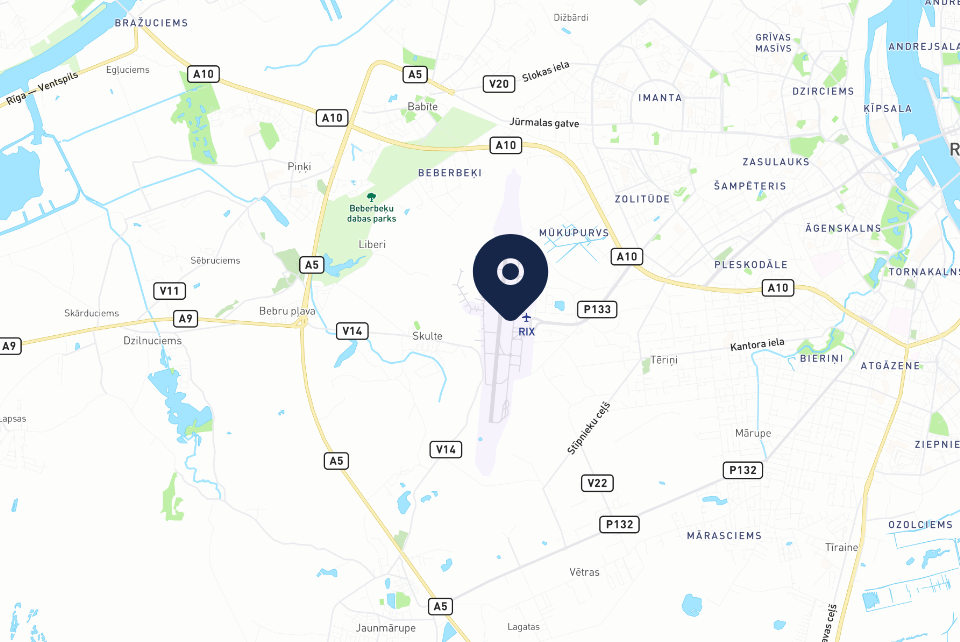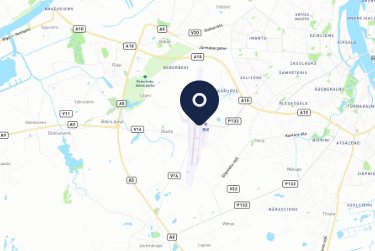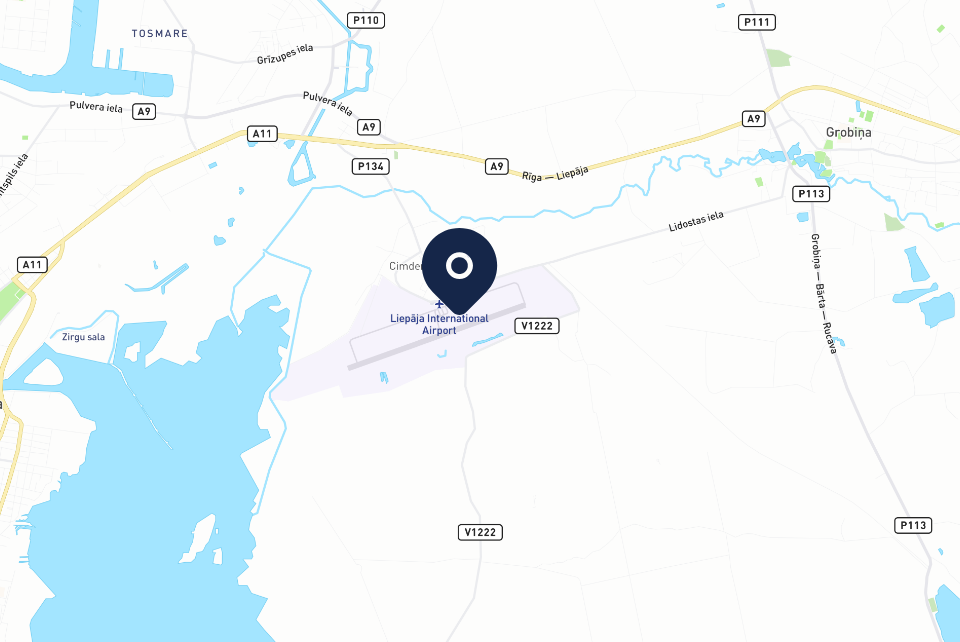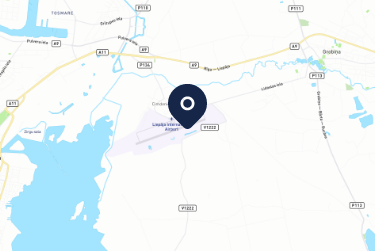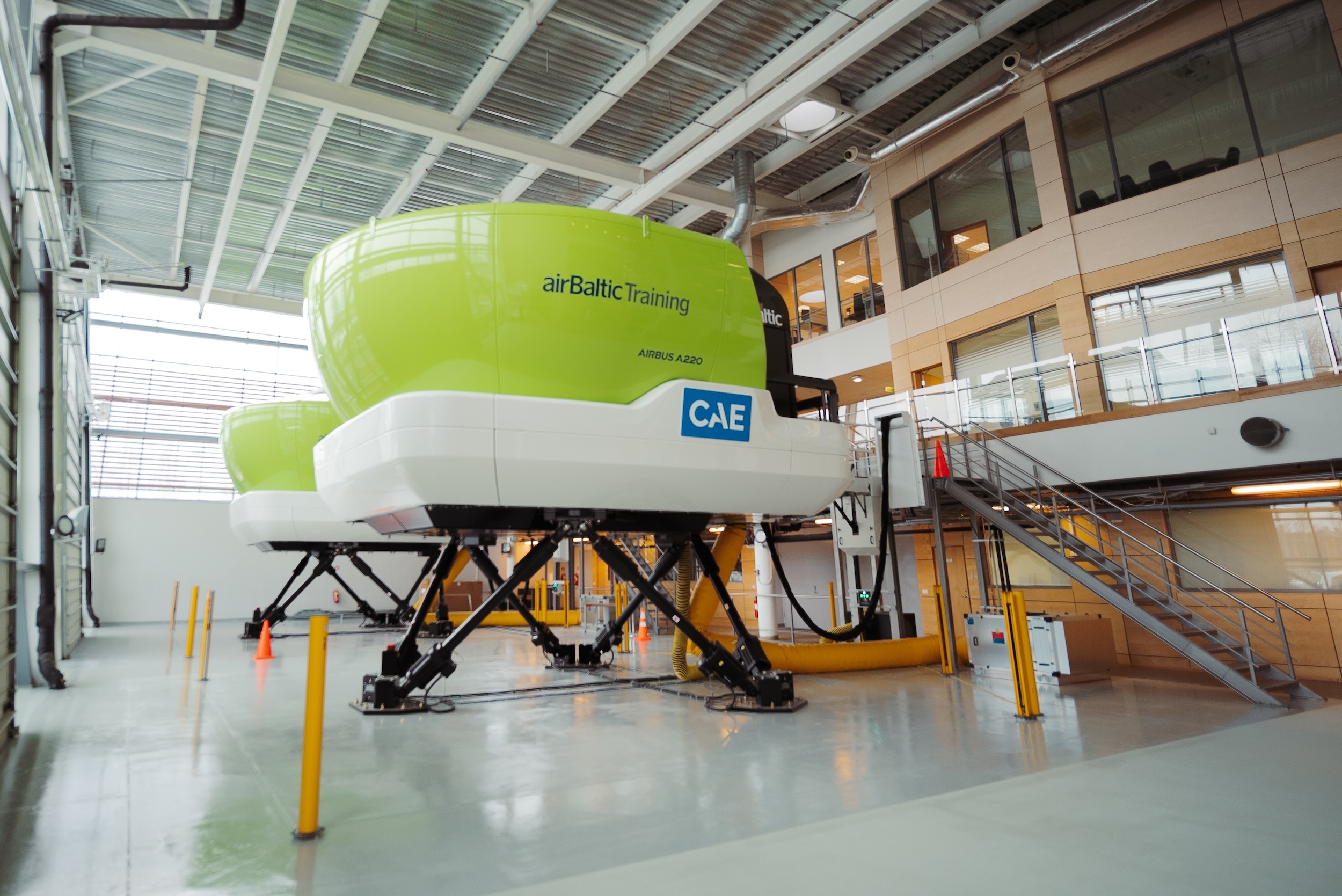
10.01.2025
The Latvian national airline airBaltic continues to expand its training facilities with the introduction of a second Airbus A220 full-flight simulator at airBaltic Training Center, in Riga, Latvia. This advanced addition will significantly enhance the airline’s capability to train and maintain the qualifications of its expanding team of pilots, supporting the growing Airbus fleet and the ongoing development of the airBaltic Pilot Academy.
As airBaltic continues to grow, with nearly 50 aircraft currently in operation and plans to operate 100 Airbus A220-300 aircraft by 2030, the demand for pilot training has increased significantly, making advanced training infrastructure essential. The addition of a second simulator is a crucial investment to meet this demand.
Martin Gauss, President and CEO of airBaltic: “As we continue to expand our operations, the addition of a second Airbus A220 simulator marks a significant step forward in our ongoing efforts to provide high-level training for our pilots. We are committed to ensuring the highest standards of safety, efficiency, and excellence in pilot training. The introduction of the second simulator not only supports the future growth of airBaltic but also strengthens our position as a key player in the global aviation industry.”
With only two Airbus A220 full-flight simulators currently operating in Northern Europe – both managed by airBaltic – the airline’s latest expansion reinforces its status as the region’s premier training hub. In contrast, similar simulators across Europe are located in Germany, Switzerland, Italy, and France, highlighting airBaltic’s unique leadership in Airbus A220 pilot training within Northern Europe.
The new simulator will offer 6 000 hours of availability per year, with an optimal utilization target of 5 500 to 6 000 hours. This will include time allocated for both recurrent and initial training, as well as technical maintenance, which is crucial to ensure the simulator’s performance remains at the highest level.
In addition to supporting airBaltic’s expanding fleet, the new simulator will also provide advanced training opportunities for technical personnel and enhance the offerings of the airBaltic Pilot Academy, particularly in areas such as the Multi-Crew Cooperation (MCC) course. The availability of a second simulator will also allow airBaltic to rent out available slots to other airlines, further maximizing the use of it.
airBaltic now have two fully equipped simulators, qualified in accordance with latest European Aviation Safety Agency (EASA) issue 2 requirements, including best precision navigation PBN (performance-based navigation) and UPRT (upset prevention and recovery training) capabilities. Both are equipped with 60” Stroke Electric Motion System as well as the most modern visual system, consisting of four-megapixel LED Projector systems and dual head-up displays. The CAE7000XR Series FFS, equipped with the CAE Tropos™ 6000XR visual system for unprecedented realism, will serve the growing pilot training needs of airBaltic Training.The Airbus A220 full-flight simulators are actively used by 138 students at the airBaltic Pilot Academy, as well as by more than 450 airBaltic pilots for training purposes. In addition, the airline offers its simulators as an external service, attracting a diverse range of clients from various countries, including Germany, Sweden, and others. These clients, including airlines and training organizations, rely on airBaltic for high-quality training. The simulators operate 24/7, with a high utilization rate, often reaching up to 5 500–6 000 hours annually, ensuring maximum efficiency and availability.
